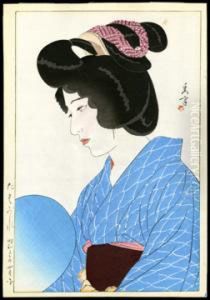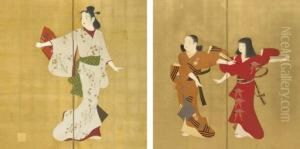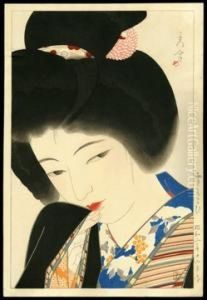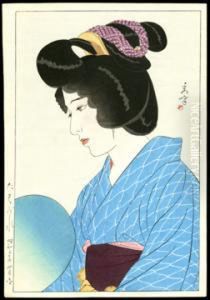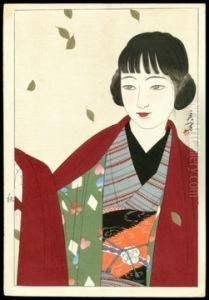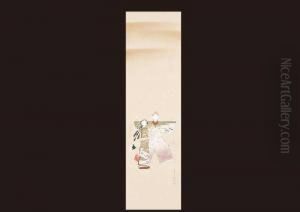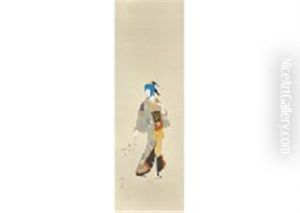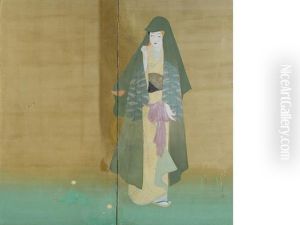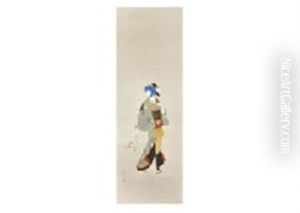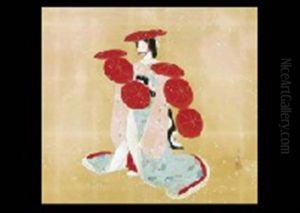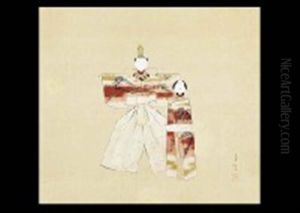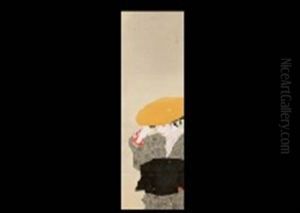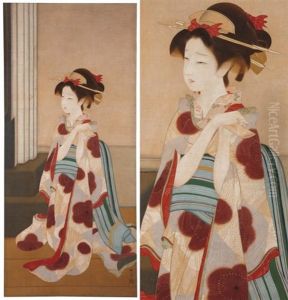Shuho Yamakawa Paintings
Shuho Yamakawa, born in 1898, was a Japanese artist whose life and work were deeply influenced by the cultural and political milieu of early 20th-century Japan. His artistic journey began in an era marked by rapid modernization and Western influence, yet his works often reflected a strong adherence to traditional Japanese aesthetics. Yamakawa's career unfolded during a period of significant historical events, including the Taisho democracy, the rise of militarism, and the impact of World War II on Japan. Despite these turbulent times, he managed to carve out a unique space for his artistic voice, contributing significantly to the Japanese art scene before his untimely death in 1944.
Yamakawa's art cannot be easily categorized, as it embodies elements of both Nihonga (traditional Japanese painting) and Yōga (Western-style painting), reflecting the dual influences that shaped Japanese art during his lifetime. He was particularly known for his exquisite landscapes and scenes of everyday life, which he rendered with a sensitivity to the changing seasons and the beauty of the natural world. His works often evoke a sense of nostalgia and a longing for a simpler, more harmonious existence, resonating with viewers who were navigating the complexities of modern life.
Educationally, Yamakawa benefitted from the diversifying art institutions in Japan, likely studying under masters who encouraged innovation while respecting traditional techniques. Though specific details about his education are scarce, it is evident from his mastery over different mediums that he received comprehensive training. Throughout his career, Yamakawa participated in various art exhibitions and was part of art circles that played a crucial role in the development of modern Japanese art. His contributions were recognized by his contemporaries, and he was involved in several important artistic movements and organizations of the time.
The outbreak of World War II and the increasing influence of the state on art and culture had a profound impact on artists like Yamakawa. During these years, many artists were compelled to create works that aligned with nationalistic themes. However, Yamakawa managed to maintain a level of artistic integrity, subtly weaving his personal vision and critiques of society into his art. His ability to balance traditional aesthetics with modern themes made his work particularly poignant during a time of national crisis.
Tragically, Shuho Yamakawa's life and career were cut short when he died in 1944, before the end of World War II. Despite his relatively brief career, Yamakawa left behind a body of work that continues to be celebrated for its beauty, technical proficiency, and emotional depth. His legacy is that of an artist who managed to capture the spirit of his time while creating timeless works that continue to inspire and move audiences today. Yamakawa's contributions to Japanese art are a testament to his skills and vision, marking him as a significant figure in the transition from traditional to modern art in Japan.
